
How to Improve Enterprise Efficiency with SaaS ERP Solutions?

Published on: November 01, 2023 Healthcare
In the complex world of healthcare, healthcare incident reporting software plays a pivotal role in maintaining patient safety. It involves the systematic documentation of any adverse events, near misses, or incidents that occur within a healthcare facility. These incidents can range from medication errors and patient falls to equipment malfunctions and communication breakdowns. We cannot overstate the significance of proactive incident management for patient safety. It plays a crucial role in identifying potential risks. It helps prevent the recurrence of adverse events. Plus, it's a continuous driver of quality improvement in healthcare. Prompt reporting and addressing of incidents by healthcare providers create a safer environment, reducing harm and enhancing overall patient safety. This is where healthcare incident reporting software comes into play, serving as an essential tool. It simplifies the incident reporting process. It makes incident analysis easier. It results in better patient outcomes and enhances overall health and safety within the healthcare system.
We cannot overstate the vital role of proactive incident management in safeguarding patient well-being. It's crucial for finding risks, preventing the recurrence of adverse events, and continually improving the quality of care. By swiftly reporting and addressing these incidents, healthcare providers create a safer and more secure environment for their patients. This, in turn, reduces the likelihood of patient harm and bolsters the overarching goal of augmenting patient safety.
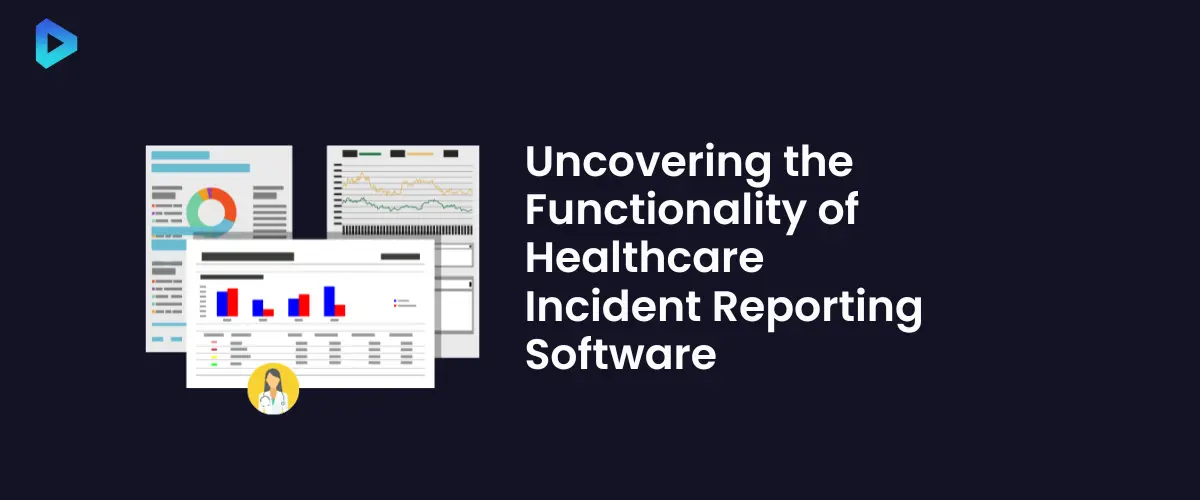
Healthcare incident reporting software is a specialized tool designed to systematically document and manage adverse events, near misses, and incidents within the healthcare sector. Its primary purpose in the healthcare field is to facilitate structured reporting, tracking, and incident analysis. This helps prevent incidents that could compromise patient safety or the quality of care.
This software acts as a central hub for healthcare professionals. They use it to document any event that could harm a patient, create an unsafe situation, or disrupt healthcare services. Such incidents could encompass medication errors, surgical complications, patient falls, infections, diagnostic errors, equipment malfunctions, or communication breakdowns among healthcare staff.
The primary goal of healthcare incident reporting software is to create a strong incident reporting system. This system encourages open and honest reporting and ensures that healthcare organizations conduct thorough investigations and analyses of reported incidents. The software offers a systematic approach to incident management, enabling healthcare organizations to identify trends, root causes, and areas for improvement.
1. Standardized Incident Reporting Templates: These templates ensure consistent and thorough documentation of incidents, adhering to healthcare-specific requirements.
2. Real-Time Tracking: Incident reporting software enables the immediate capture and tracking of incidents, improving transparency and timely response.
3. Data Analysis Tools: robust data analysis tools assist in identifying incident patterns and root causes, enabling informed decision-making.
Differences from Generic Systems:
1. Patient-Centric Focus: Healthcare incident reporting software prioritizes patient safety, ensuring that incidents are reported, documented, and managed with the patient's well-being in mind.
2. Data Security: These systems prioritize the secure handling of patient data to comply with healthcare regulations like HIPAA, which generic systems may not prioritize.
3. Regulatory Compliance: Healthcare-specific incident reporting software adheres to industry regulations and standards, ensuring healthcare organizations meet specific requirements, unlike generic systems.
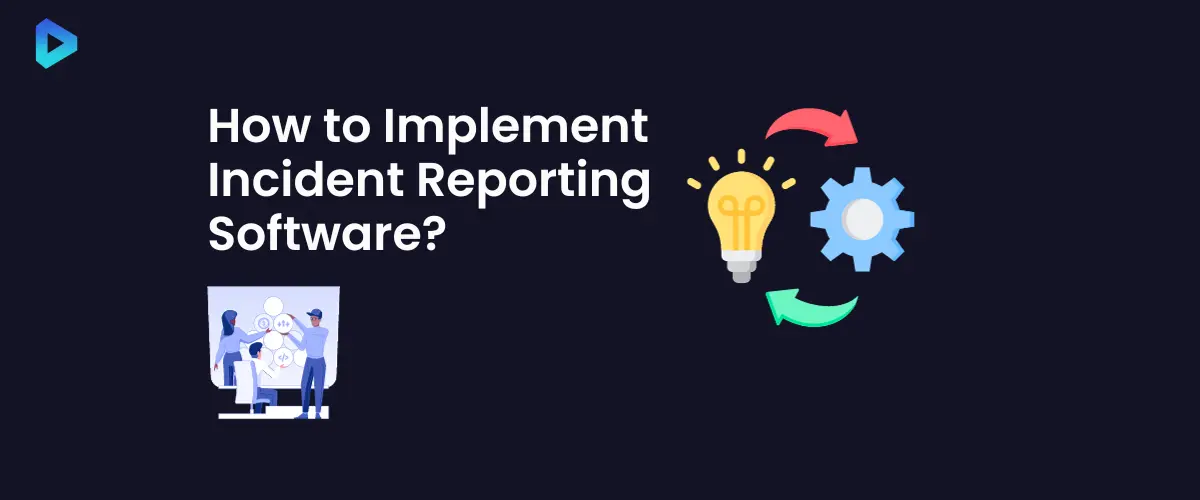
The process of integrating incident reporting software into existing healthcare systems is a crucial aspect of its implementation. We designed this integration to streamline incident reporting and management, ensuring seamless software functionality within the healthcare ecosystem.
Integration involves configuring the incident reporting software to work smoothly with a healthcare facility's current IT infrastructure. This process can vary based on the specific software and systems in use. One primary consideration is appropriate with electronic health records (EHR) systems, which are fundamental in healthcare settings. Incident reporting software should be able to exchange data with EHRs to provide a comprehensive overview of patient safety and care quality.
Additionally, it should align with other healthcare IT solutions. These include patient management systems, laboratory information systems, and pharmacy systems. This ensures a holistic approach to incident reporting and patient safety. Suitability with these systems ensures that all relevant data is accessible and that incident reporting becomes a seamless part of routine healthcare operations.
The successful integration of incident reporting software with existing systems is essential for creating a cohesive and efficient incident management process. It facilitates the exchange of critical data, promotes better decision-making, and ultimately enhances patient safety by addressing incidents promptly and thoroughly. Healthcare settings should carefully plan and execute the integration process to optimize the benefits of specialized incident reporting software.
When implementing incident reporting software in a healthcare setting, user training and adoption are crucial. Training healthcare staff effectively ensures they can navigate the system, report incidents accurately, and understand its features. This training process not only promotes user proficiency but also enhances the adoption of the software within the organization. Clear communication about the software's benefits, its role in improving patient safety, and its potential to streamline incident reporting and management is necessary to achieve successful software adoption. Encouraging staff buy-in and demonstrating the software's user-friendliness are essential aspects of adoption. Additionally, ongoing support and feedback channels play a pivotal role in ensuring that healthcare staff feel confident and comfortable with the software. User training and adoption are crucial for maximizing the potential of incident reporting software to enhance patient safety and optimize incident management in healthcare settings.
A vital component of implementing incident reporting software in healthcare is the software's flexibility to meet the unique needs of healthcare facilities and its capacity to scale alongside growing institutions.
Customization: Engineers customize healthcare incident reporting software to meet the precise requirements of healthcare organizations, allowing healthcare organizations to tailor the software to their precise requirements. This means that healthcare facilities can adjust the software to seamlessly integrate it into their existing workflows, incident reporting protocols, and data structures. Whether it's a small clinic, a large hospital, or a specialized healthcare network, customization ensures that the software aligns with specific needs, helping to create a user-friendly and efficient reporting process that is in harmony with the distinct requirements of the organization.
Scalability: In addition to personalization, healthcare institutions can use the software to accommodate their growth. As healthcare facilities expand, face increased incident volumes, or undergo mergers and changes in their organizational structures, the software can smoothly adapt to these shifts without requiring a complete overhaul. This scalability ensures that healthcare organizations can always benefit from the software as it evolves. It enables the software to cater to the growing demands for comprehensive incident reporting, analysis, and management, making it a versatile and enduring solution suitable for healthcare facilities of all sizes.
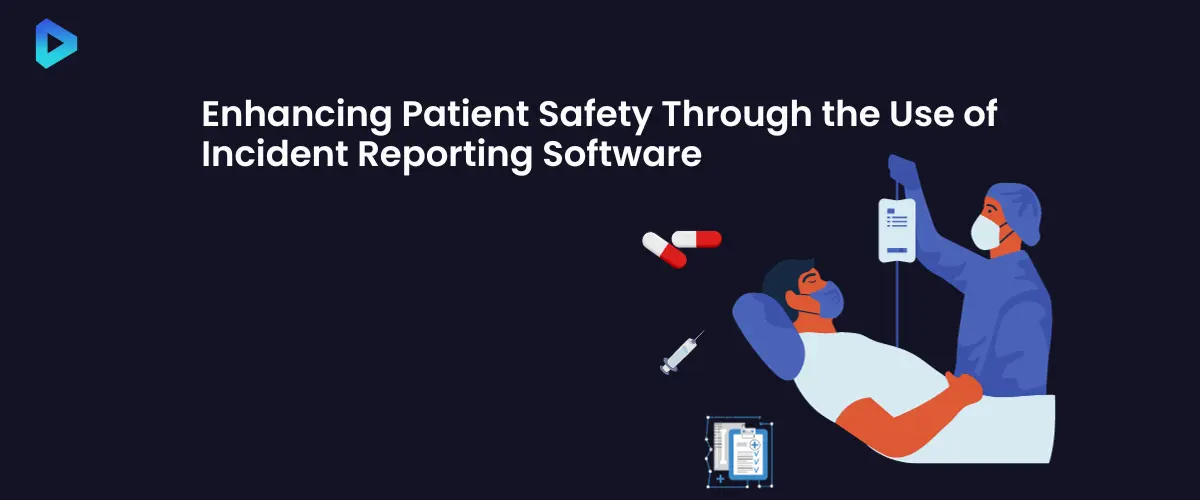
Real-time incident reporting stands as a pivotal element in advancing patient safety through incident reporting software. It facilitates the immediate documentation and communication of incidents, significantly enhancing the response to critical situations within healthcare settings. Real-time reporting ensures that healthcare professionals document incidents promptly as they occur, rather than experiencing delays caused by manual reporting processes. This swift documentation allows for rapid responses to critical situations, reducing the time it takes for healthcare professionals to become aware of incidents and take appropriate action.
Immediate reporting is particularly crucial in scenarios where patient safety is at stake. For instance, in the case of a medication error, swift reporting can trigger an urgent review of the patient's condition and the administration of corrective measures, potentially preventing further harm. In situations involving patient falls or adverse reactions to treatments, real-time reporting enables immediate interventions to mitigate risks and provide timely care. In cases of infectious disease outbreaks or safety hazards within the healthcare facility, real-time incident reporting ensures that healthcare staff can swiftly initiate infection control measures, preventing the spread of diseases and ensuring the safety of both patients and themselves.
Trend Analysis: This software is equipped with powerful data analysis tools that allow healthcare organizations to uncover recurring patterns and trends within incident reports. These trends encompass various dimensions, such as the types of incidents, their root causes, and the specific locations within the healthcare facility where they frequently transpire. Through the combining and examination of this data, healthcare professionals can gain profound insights into the underlying causes and contributing factors behind incidents.
Implementing Preventive Measures: The insights derived from trend analysis serve as a solid foundation for the implementation of preventive measures. By recognizing repetitive incidents and their root causes, healthcare organizations can take proactive steps to address these issues. Preventive measures can take diverse forms, including adjustments to standard operating procedures, additional staff training, bolstered safety protocols, and physical changes to the facility's environment. For instance, if trend analysis reveals a consistent pattern of patient falls in a specific area, healthcare facilities can take measures such as installing non-slip flooring, adding handrails, or increasing staff presence in that area to curtail the occurrence of falls.
In the realm of advancing patient safety through the use of incident reporting software, ensuring regulatory compliance is crucial. The adoption of incident reporting software goes hand in hand with maintaining strict adherence to healthcare regulations. Software solutions are designed to implement rigorous measures for data protection, access control, and encryption, and they collectively serve as a fortress safeguarding sensitive patient information.
Compliance with healthcare regulations takes on paramount importance, especially when we consider key regulations such as the Health Insurance Portability and Accountability Act (HIPAA). HIPAA stands as the pinnacle of safeguarding patient data and privacy in the healthcare industry. Within this regulatory framework, incident reporting software plays a crucial role in ensuring that not only do these high standards get met but also consistently upheld.
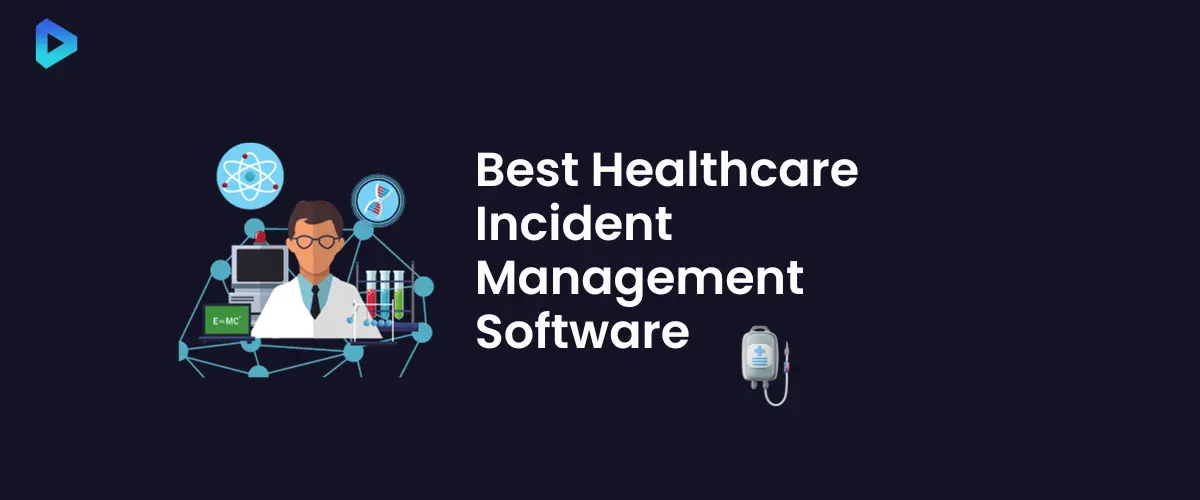
When exploring the top healthcare incident reporting software solutions, it's essential to consider different vendors. Let's begin with an introduction to the first healthcare incident reporting software vendor. Vendor 1 is a well-established provider of incident reporting software tailored for healthcare organizations. Their software is purpose-built to meet the unique needs of the healthcare sector, ensuring strict compliance with healthcare regulations and the safeguarding of patient data. Notably, Vendor 1's software offers a robust analytics module, enabling healthcare providers to derive valuable insights from incident data, optimize resource allocation, and develop proactive patient safety strategies. The software also provides multiple communication channels, including phone, email, and SMS, empowering patients to choose their preferred means of communication. Users consistently praise Vendor 1's user-friendly design, adaptable features, and significant improvements in incident tracking, reporting, and management. The analytics tools and personalized incident reporting features have received high acclaim for enhancing patient safety and satisfaction within healthcare organizations.
In the realm of top healthcare incident reporting software solutions, we introduce the second vendor, providing a brief comparison with the first. Vendor 2 is a prominent player in the incident reporting software market, offering unique features that set it apart. Many recognize their software for its user-friendly interface and robust incident-tracking capabilities, ensuring that healthcare organizations can efficiently document and manage incidents. Users frequently commend Vendor 2's software for its ease of use and effectiveness in streamlining incident reporting processes. Pricing details may vary depending on the specific requirements of healthcare facilities, but many consider them competitive, making Vendor 2 an attractive option for organizations of different sizes. Users also appreciate the scalability of the software, which allows it to grow with healthcare institutions, adapting to their evolving needs and ensuring long-term usability.
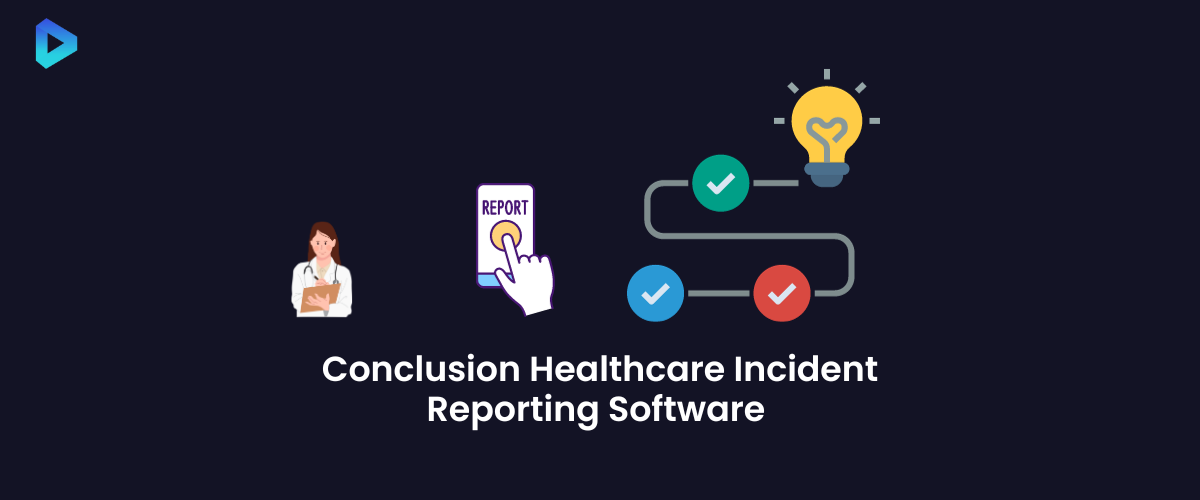
In the realm of healthcare, patient safety is paramount, and incident reporting software stands as a pivotal tool in this mission. It not only streamlines the process of reporting adverse events, near misses, and unsafe conditions but also plays a vital role in the broader landscape of patient safety. Incident reporting software significantly enhances patient safety by promptly documenting, investigating, and resolving incidents. By providing healthcare organizations with a systematic and efficient way to track incidents, it facilitates the implementation of preventive measures, reducing the risk of similar occurrences in the future.
Moreover, these software systems promote a culture of safety within healthcare institutions. They encourage healthcare staff to become proactive in reporting and addressing potential issues. This heightened awareness and accountability foster a safer environment for patients and staff alike. Do not overlook the critical role of healthcare incident reporting software in regulatory compliance. Healthcare institutions must adhere to stringent regulations, including HIPAA, HITECH, and other industry standards, for data security and privacy. The flexibility of incident reporting software in various healthcare settings ensures compliance with these regulations.
Incident reporting software in healthcare is a specialized digital tool designed to facilitate the documentation, tracking, and management of various incidents and events within healthcare settings. These incidents can range from medical errors and adverse events to safety concerns. The software streamlines the reporting process, ensuring incidents are recorded accurately and in compliance with healthcare regulations.
It directly streamlines the process of reporting adverse events, near misses, and unsafe conditions, ensuring that healthcare professionals promptly document and investigate incidents This leads to quicker resolution and the implementation of preventive measures. Indirectly, it promotes a culture of safety within healthcare organizations, encouraging staff to be proactive in reporting and addressing potential issues. This increased awareness and accountability contribute significantly to improved patient safety.
Yes, incident reporting software is highly customizable and adaptable to various healthcare settings. Designers have made these systems flexible, allowing healthcare institutions to tailor them to their specific needs. Whether you're in a hospital, clinic, long-term care facility, or any other healthcare setting, you can configure the software to align with your company's unique processes, reporting requirements, and workflow.
Healthcare incident reporting software must adhere to a range of regulations and standards to ensure patient data privacy and security. These typically include compliance with the Health Insurance Portability and Accountability Act (HIPAA) for patient data protection and the Health Information Technology for Economic and Clinical Health (HITECH) Act for electronic health records.
Effective training for healthcare staff is crucial for the successful implementation of incident reporting software. To ensure proficiency, healthcare institutions should provide comprehensive training programs. This training can include hands-on workshops, online courses, and access to user-friendly guides and resources. Regular refresher courses and ongoing support are also essential. This training empowers staff to use the software confidently, fostering a culture of safety and ensuring that they report incidents accurately and promptly.

How to Improve Enterprise Efficiency with SaaS ERP Solutions?

Why Operational CRM is Essential for Customer Satisfaction?

Why Mobile Web App are Essential for Your Supply Chain Business?

Where to Start with Advanced Analytics in Your Enterprise?